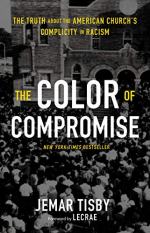
|
| Name: _________________________ | Period: ___________________ |
This test consists of 5 multiple choice questions, 5 short answer questions, and 10 short essay questions.
Multiple Choice Questions
1. What famous silent film claimed to present the story of the KKK's establishment?
(a) The Birth of a Nation.
(b) A Corner in Wheat.
(c) The Fugitive.
(d) Broken Blossoms.
2. Following the Civil War, what part of the U.S. had the largest number of Catholics?
(a) The South.
(b) The East Coast.
(c) The Midwest.
(d) The West Coast.
3. In Chapter 7, Tisby speaks about that the "conspicuousness of white supremacy in the south" (129). According to him, what is one side-effect of this phenomenon?
(a) It is harder for citizens in the South to understand history.
(b) It is easier for racism in other parts of the country to go unnoticed.
(c) It is harder for racism to be penalized in the South.
(d) It is easier for residents in the North to confront racism.
4. How many people died in the Civil War?
(a) 650-850,000.
(b) 400-500,000.
(c) 200-400,000.
(d) 500-650,000.
5. During Billy Graham's 1953 crusade, he encountered segregated seating at a location where he was scheduled to speak. How did he respond?
(a) He ignored the dividing ropes and made no comments about their presence.
(b) He private expressed discomfort, but chose to continue his speech.
(c) He refused to speak unless the ropes dividing attendees were taken down.
(d) He publicly approved of the separation of white and Black attendees.
Short Answer Questions
1. Which professions were excluded from receiving Social Security?
2. How many Black people served in the U.S. armed forces during World War I?
3. Why did lynch mobs in Jim Crow regions often target Black preachers?
4. What did Dr. George Edmund Hayes blame for the Red Summer violence?
5. What was the name of the group who fought for the rights of Black people in the Reconstruction Era?
Short Essay Questions
1. What was the purpose of the Freeman's Bureau?
2. What were "sundown towns"?
3. Following the Scopes Trial of 1925, what did many white Christians fear?
4. What is the "social gospel," as outlined in Chapter 7?
5. According to Tisby, how did most white Christian moderates responds to the civil rights movement?
6. In Chapter 5, Tisby argues that slavery was both a religious and civil issue. How was slavery a religious issue?
7. What prompted William J. Seymour's religious activities?
8. According to Tisby, what impact did the inaction of white moderate Christians have on the civil rights movement?
9. What was the "Grandfather Clause"?
10. According to Tisby, what were some of the "radical" messages Martin Luther King, Jr. supported?
|
This section contains 672 words (approx. 3 pages at 300 words per page) |

|




